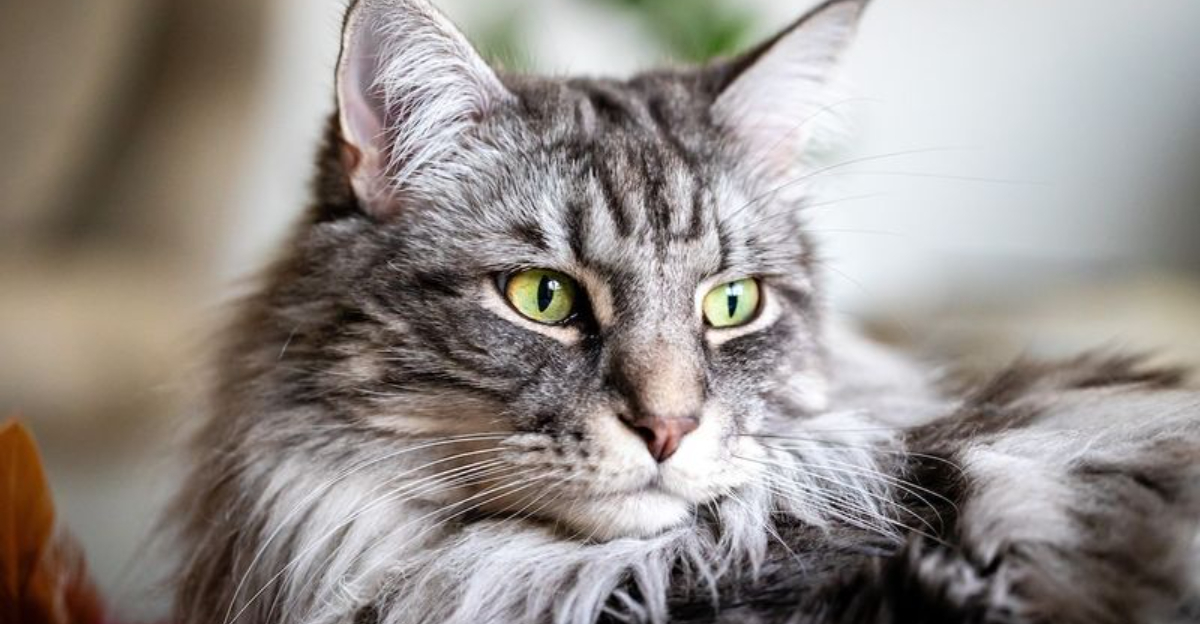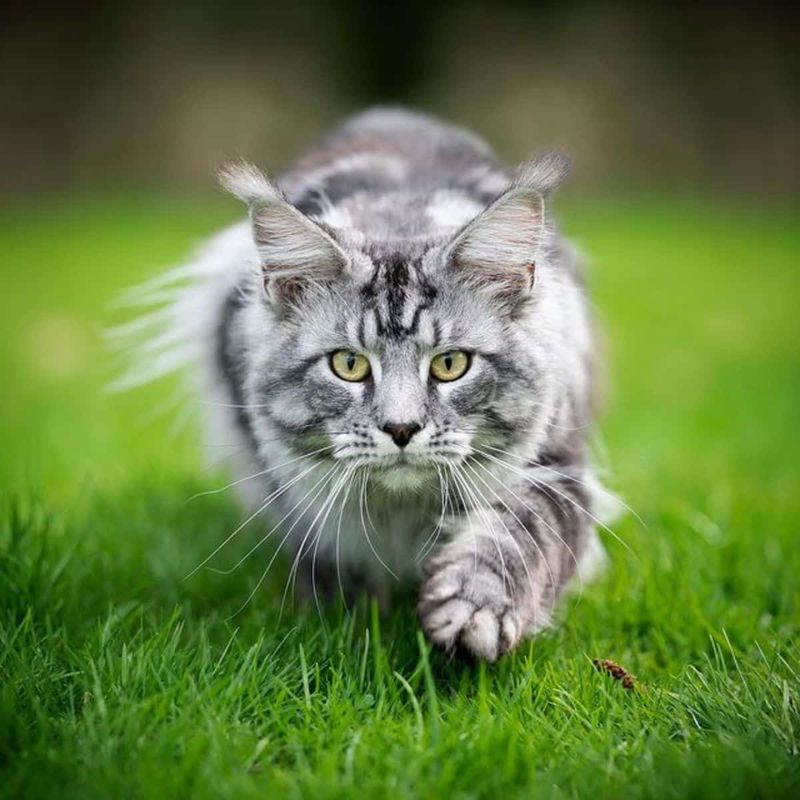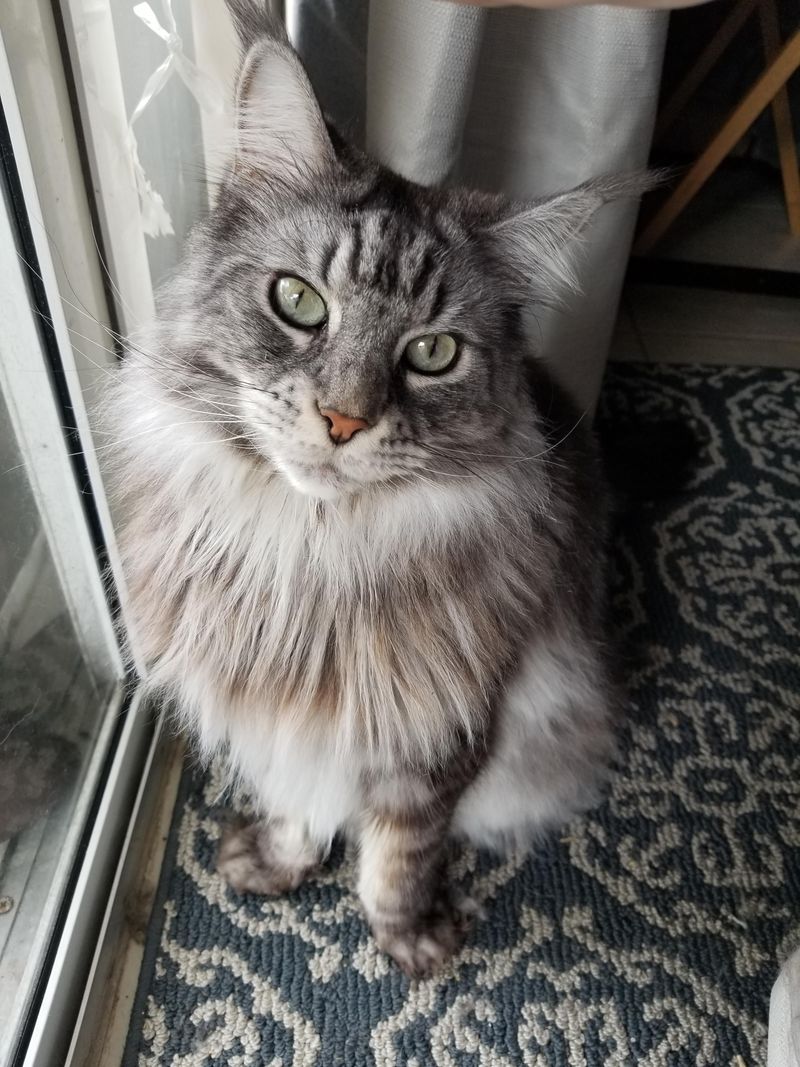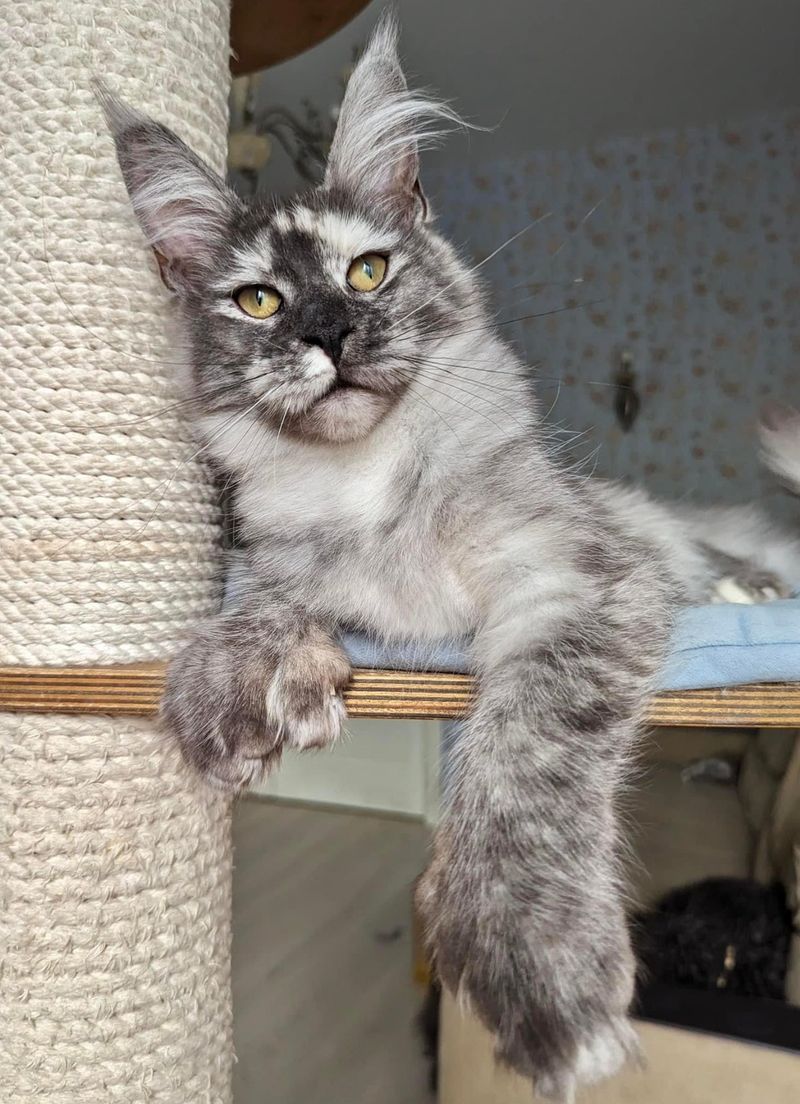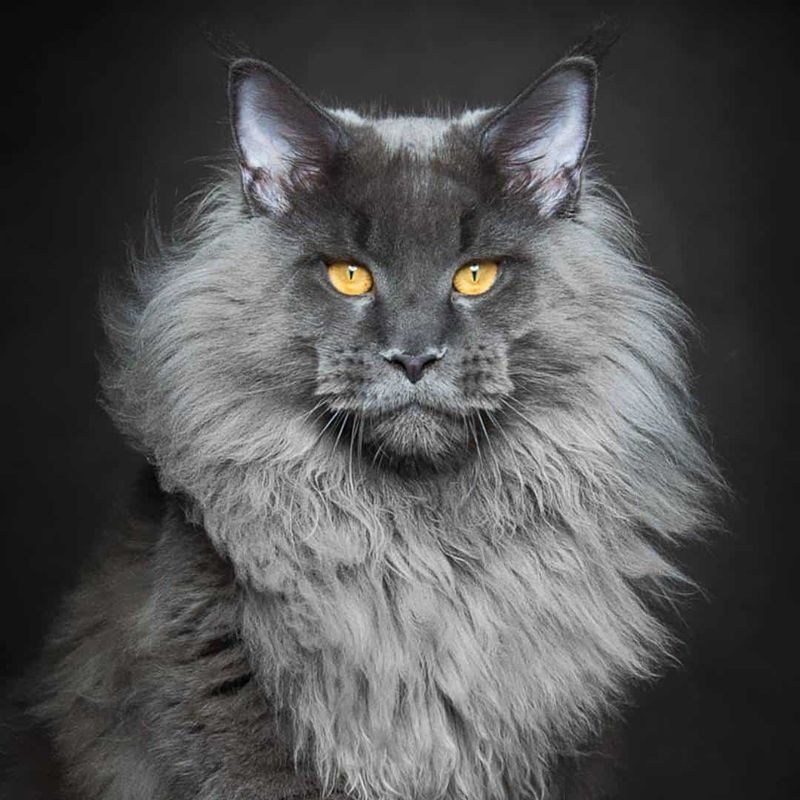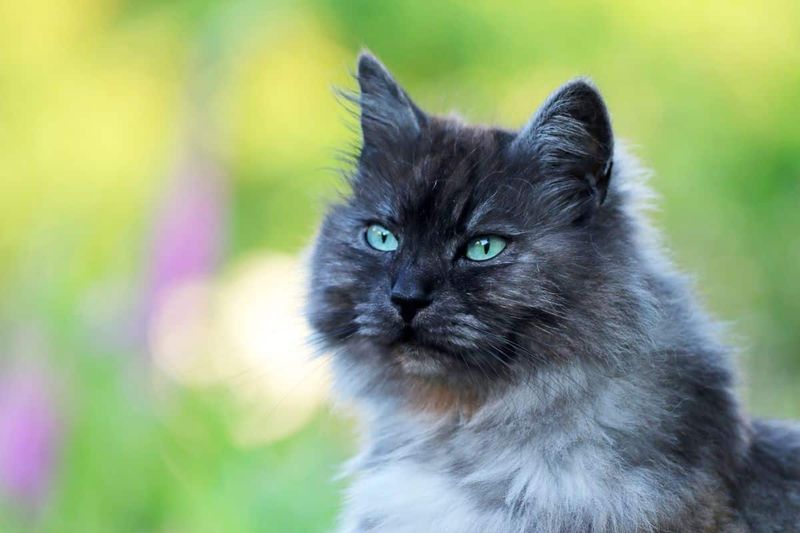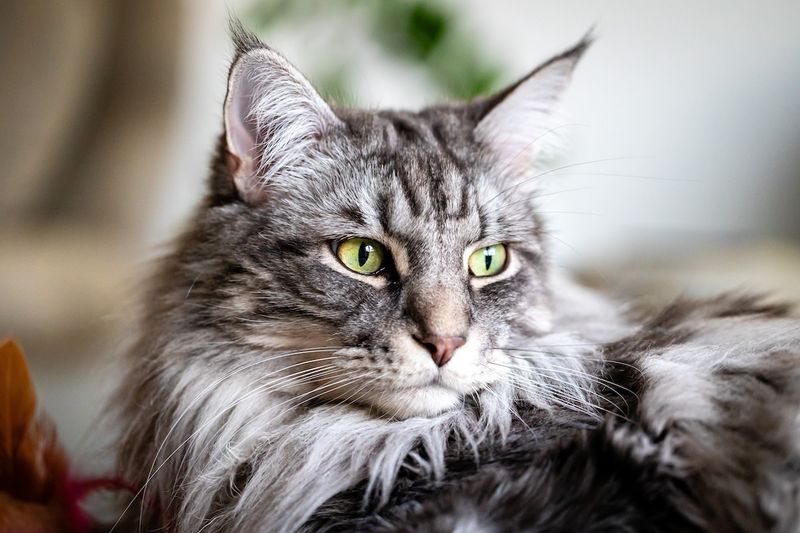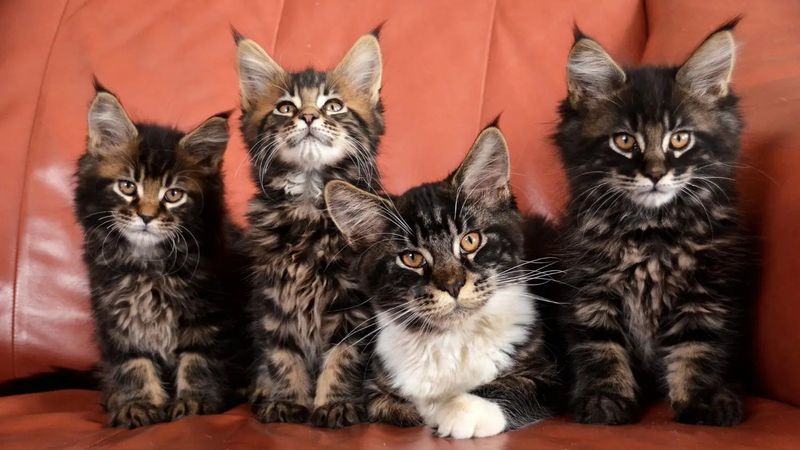📖 Table of Content:
The Smoke Maine Coon is a truly remarkable breed with genetic traits that distinguish it from other felines. Known for their striking smoky coat, these cats have a unique fur coloration that changes as they move, giving them an almost ethereal quality. Their appearance alone is enough to capture the imagination, but it’s their genetic traits that make them stand out even more.
These gentle giants are not just about looks; their behavior and characteristics reflect their exceptional genetics. The Smoke Maine Coon’s coat, a standout feature, is the result of a rare gene combination that gives it its captivating hue. However, it’s not just the fur that sets them apart—this breed has several other unusual traits that make them a genetic anomaly in the cat world.
From their size to their temperament, the Smoke Maine Coon carries traits that are not commonly found in other breeds. Their genetic makeup creates a perfect storm of physical beauty and intriguing behaviors. The more one learns about these cats, the more apparent it becomes that they are truly a breed apart, defined by their fascinating genetic anomalies.
1. Silver-Tipped Fur That Defies Genetics
Mother Nature pulled a special trick with the Smoke Maine Coon’s fur. Each hair shaft has a remarkable structure – dark at the root but gradually lightening to silver at the tip, creating that signature smoky appearance.
Unlike regular color patterns, this smoke effect results from the inhibitor gene that suppresses pigment in the hair shaft except at the base. When the cat moves, the fur parts to reveal the darker undercoat, creating an illusion of a color-changing coat.
Scientists still don’t fully understand how this gene interacts with other color genes, making these cats a continuing source of fascination for feline geneticists.
2. Water-Resistant Double Coat
Contrary to the typical feline aversion to water, Smoke Maine Coons sport a specialized double coat that’s naturally water-resistant. The dense undercoat paired with longer guard hairs creates a unique water-shedding system that evolved from their seafaring ancestors.
Maine shipboard cats needed this adaptation to survive harsh North Atlantic conditions. Their fur contains higher levels of natural oils that other domestic cats lack, giving them superior protection against moisture.
The smoke coloration actually enhances this water-resistant quality, as the specialized hair structure that creates the smoke effect also helps repel water more effectively than solid-colored fur.
3. Polydactyl Paws With Extra Digits
Sailors once considered six-toed Maine Coons lucky charms aboard ships. The polydactyl gene appears with surprising frequency in Smoke Maine Coons, giving them extra toes that resemble thumbs.
These bonus digits aren’t just decorative—they provide enhanced dexterity that allows these clever cats to manipulate objects with almost hand-like precision. Some can even hold small items or open simple latches!
Researchers believe this genetic quirk traces back to British seafaring cats brought to New England in colonial times. The smoke coloration and polydactylism often appear together due to genetic linkage, creating cats with both magical-looking fur and extraordinary paws.
4. Unusually Large Heart Structure
Beating within the chest of every Smoke Maine Coon is a heart that’s structurally different from other cats. Veterinary cardiologists have documented that these felines possess larger heart chambers and thicker ventricular walls.
This unique cardiac anatomy allows them to pump blood more efficiently throughout their substantial bodies. Their hearts also contain specialized muscle fibers that differ from other domestic cats, giving them remarkable stamina despite their size.
Unfortunately, this special heart structure also makes them prone to hypertrophic cardiomyopathy—a genetic heart condition that affects the smoke variant at higher rates than solid-colored Maine Coons, suggesting a possible link between the smoke gene and cardiac development.
5. Chirping Vocal Communication
Forget typical meows—Smoke Maine Coons possess vocal cords that produce bird-like chirps and trills unlike any other domestic cat breed. Their unique laryngeal structure creates these distinctive sounds that fall between a chirp and a trill.
DNA analysis reveals that Smoke Maine Coons carry specific genetic markers affecting their vocal apparatus. This gives them an expanded range of sounds beyond normal feline vocalizations.
Interestingly, smoke-patterned individuals tend to be more vocal than their solid-colored relatives. Researchers suspect this connection between coat pattern and vocalization might stem from neural crest cells that influence both pigmentation and vocal cord development during embryonic growth.
6. Temperature-Adaptive Eye Color
The piercing gaze of a Smoke Maine Coon holds a scientific marvel—eyes that actually change color based on body temperature. This rare phenomenon, called temperature-dependent chromism, occurs when specialized pigments in their irises react to slight variations in body heat.
During colder weather, their eyes often appear more vibrant and intense, while warmer temperatures can cause subtle shifts toward more muted tones. This adaptation likely evolved to enhance hunting in various light conditions as seasons changed.
The smoke gene interacts with these temperature-sensitive pigments, making the effect more pronounced in smoke-patterned cats than in solid-colored Maine Coons—another example of their genetic uniqueness.
7. Delayed Genetic Maturity Timeline
While most cats reach full maturity by age 2, Smoke Maine Coons follow an extended growth timeline that baffles veterinarians. These genetic anomalies continue developing until age 4 or 5—twice as long as other domestic cats.
Their skeletal structure grows at a slower pace, with growth plates remaining open far longer than normal. This gradual development contributes to their exceptional size without creating health issues that rapid growth would cause.
The smoke gene appears linked to this delayed maturation, as smoke-patterned individuals typically take even longer to reach full size than solid-colored Maine Coons. This extended growth period affects not just physical size but also brain development, potentially contributing to their renowned intelligence.
